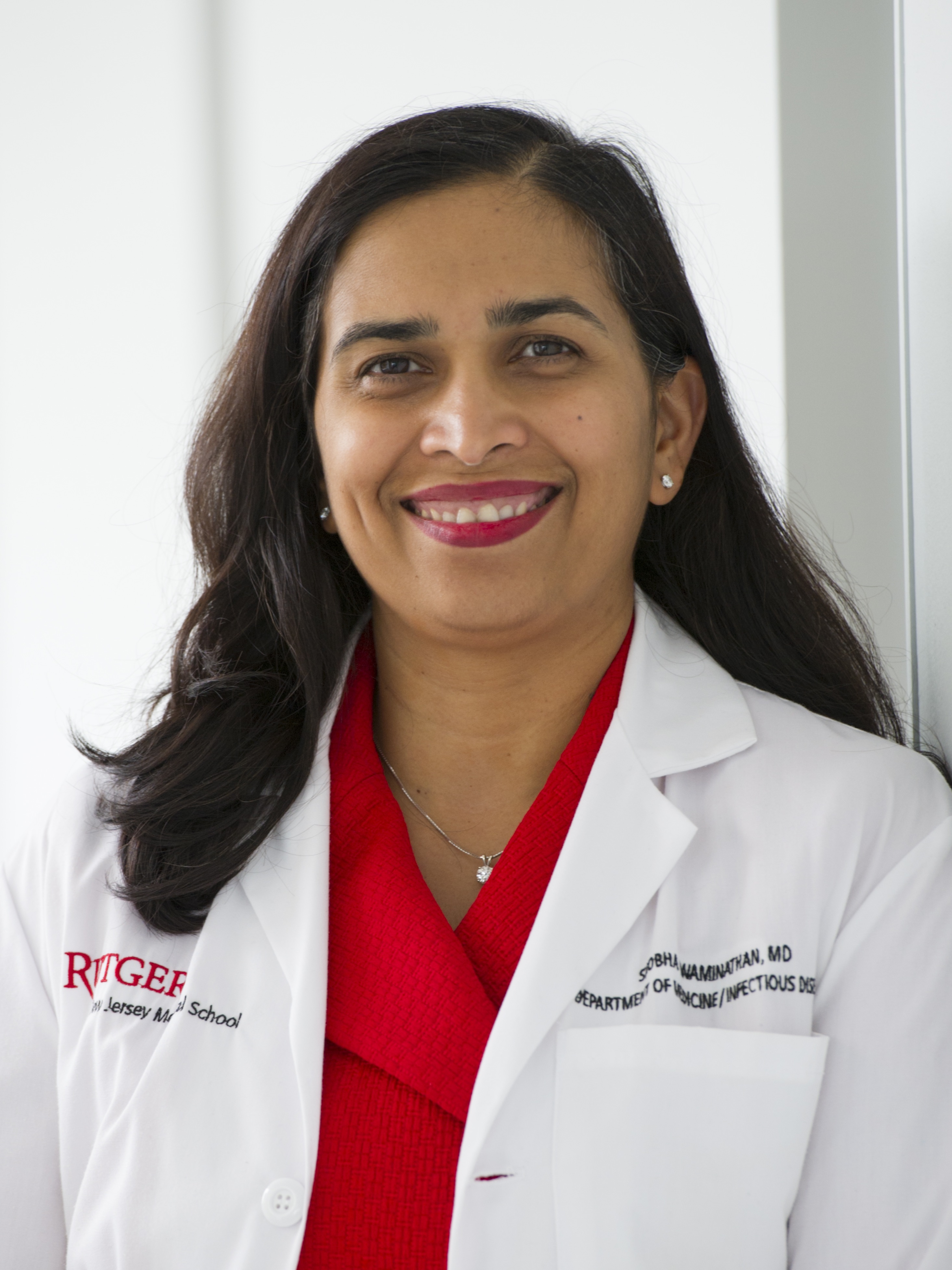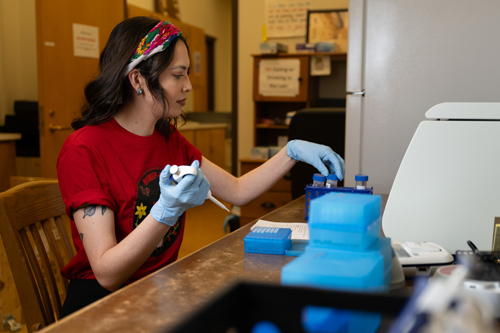Jeffrey Carson, a Distinguished Professor of Medicine at Rutgers Robert Wood Johnson Medical School and principal investigator at Rutgers for the Johnson & Johnson trial, and Shobha Swaminathan, associate professor of medicine at Rutgers New Jersey Medical School and clinical research site leader for the Moderna trial, discuss how the medical schools were selected and give an inside look at the process of creating a safe and effective vaccine.
How did Rutgers become a site for the COVID-19 vaccine clinical trials?
Carson: Johnson & Johnson was aware that at the start of the pandemic Rutgers began a large cohort study evaluating hundreds of health care workers with direct patient exposure and non-health care workers with no direct patient contact. We made a case to them that since we had permission to contact these participants for future research, it would serve as a starting point for recruiting people into a vaccine trial.
Swaminathan: The Research with a Heart site at Rutgers New Jersey Medical School had already been funded by the National Institute for Health (NIH) for about 15 years and had conducted multiple HIV clinical trials, so our site was trusted. Our experience and the trust in our clinical site made it easier to pivot to the COVID-19 clinical trial. Also, Rutgers as an institution has always supported clinical trials, so we were confident that we’d have the support needed to make this trial a success despite the short timeline.
It was also crucial that the sites chosen were located in severely impacted communities that needed an intervention. The virus disproportionately affected Essex County, where the school is located, compared to other New Jersey counties.
Given the rapid timeline required to develop the COVID-19 vaccine studies, clinical sites that were connected to the community, were trusted and had a track record of safely and effectively conducting clinical trials were needed. It was important to begin with a clinical trial site that already had good track records rather than building one up from scratch. We simply didn’t have that kind of time.
Were there any challenges to securing Rutgers as a site?
Carson: Johnson & Johnson was seeking to enroll people in areas with high rates of infection. Although the rate of infection had decreased in New Jersey during the summer and early fall and was lower than other areas, the projections from the state Department of Health indicated that those numbers were going to increase substantially, which turned out to be the case by late fall. At that point the rate of COVID-19 infections in New Jersey were high and there were thousands of eligible participants. Additionally, I made it clear to Johnson & Johnson that Rutgers really wanted to work with them on this trial.
How did you recruit participants?
Carson: A key factor was getting permission to send emails to the Rutgers community and alumni who lived within a reasonable distance to alert them that we planned to be part of a vaccine trial. We asked them to respond after an online consent to complete a confidential survey with their medical and personal information. We also did a lot of advertising. Using all these avenues, including the health care worker study participants, we were able to identify about 6,000 people who were potentially eligible for the vaccine trial. Success in clinical research doesn’t happen by chance. Because we were trying to recruit so many people, most of our staff in the clinical research units became dedicated to this study. We were 100 percent committed to this trial, and that made the difference.
Swaminathan: We focused earlier on Essex county as the virus severely impacted that community and we later expanded into other areas of New Jersey. Participation was voluntary and required those involved to provide informed consent – after receiving a detailed overview of the study, including possible benefits and side effects. Participants also had the option to leave the study at any point. Participation in clinical trials is the only way we can find answers that will ultimately help us all to overcome the COVID-19 pandemic. Participants in the area had also signed up to be contacted for a COVID-19 vaccine study as part of a registry.
What logistical considerations did you have?
Carson: In clinical trials, the first step is getting a contract, which is often a huge barrier as there are a lot of factors to consider. However, this part moved quickly due to the strong commitment of our legal team and Rutgers departments. Likewise, the Institutional Review Board moved efficiently and communicated what was needed for the study’s approval quickly. This allowed us to submit our paperwork in a format they wanted to keep the process moving.
Swaminathan: Clinical trials have multiple steps involved including the contracts, IRB approvals, hiring and training additional staff and then doing the hard work of getting the word out in the community. Fortunately, given the critical nature of the study, everyone was extremely cooperative and helped ensure that we were on track to meet our demands.
Now that the FDA has granted the vaccines emergency use authorization, what is next for the trials?
Carson: We will follow up with the participants for two years, checking for new infections and doing blood tests to check for immunity.
Swaminathan: We are still following up with the Moderna study participants. We will continue to do so for about two years which is the estimated time we’re anticipating the Moderna vaccine’s immunity will last. It’s also really encouraging that millions of people have been vaccinated so far, which has given us hope that we are on our way to getting the pandemic under control.
How did you get interested in clinical trial research?
Carson: I’m an internal medicine doctor. As a fellow at the University of Pennsylvania, I performed observational research. However, it became clear to me that clinical trials are the gold standard for establishing the efficacy of treatments. I did a sabbatical at Oxford University, where I worked with leaders in clinical trial methods. While at Oxford, I wrote my first National Institutes of Health grant for a clinical trial evaluating transfusion thresholds in patients undergoing hip fracture repair. We eventually enrolled 2016 patients from 47 centers and the results were published in the New England Journal of Medicine. No doubt that clinical trials influence have the greatest impact on how patients are cared for.
That said, clinical trials are expensive and hard to do. They require enormous energy and passion, and a commitment to get it done.
Swaminathan: My first introduction to clinical trials in my career was in the area of Hepatitis and HIV. When I began working at Rutgers in 2004, treatment options for people infected with Hepatitis were very limited. This piqued my interest because I had many Hepatitis B patients and didn’t know how to treat them. This pushed me to want to have treatment options for them, which is how I got introduced to clinical trials. Over the years, most of these patients have been successfully treated, with some completely cured of the disease.
That is gratifying because I went to medical school to save lives and do so with research conducting clinical trials and treating patients right there, making it even more worth it. Of course, these successes have been able to leverage into other clinical trial opportunities to help save more lives in other disease areas.



